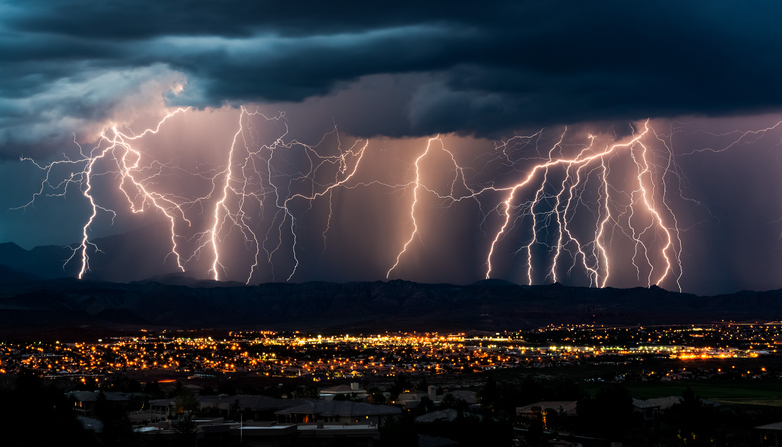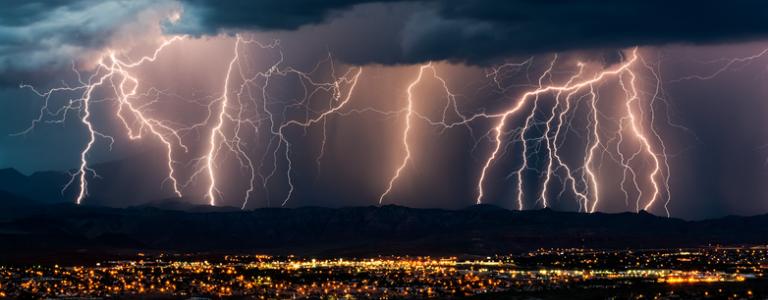2017 Disaster Lessons: Climate-sensitive planning is a must
Responding to climate change has become more urgent than ever. This guest blog post from Climate Diplomacy explains what we have learned about responding to disasters this year.
Responding to climate change has become more urgent than ever.
Cooperation within communities is a precondition for urban resilience, as recurring heatwaves and hurricanes cannot be put down to chance any more. Lou del Bello argues that part of the response to disaster risks lies in digital communications, which will help build preparedness from the bottom up.
Among the planning measures a city needs to survive and thrive, climate change response is now more important than ever. Analysis shows how the developing world is at greater risk from climate change, but the threat is global. Over 90% of the world’s cities are located in coastal areas, where sea level rise already threatens the most vulnerable neighbourhoods.
Climate-driven disasters are increasingly becoming the order of the day and policy makers will have to take cognisance of this. It is past the time when responding to climate change just involved pre and post disaster measures, mostly revolving around funding distribution. The idea of preparedness now encompasses a much broader set of issues, such as cooperation within communities, public understanding of environmental risks and the way politicians use science to shape their policies, for good or bad.
Understanding Vulnerability Ahead of Time
Chad Briggs, a strategy director with the risk assessment consultancy Global Interconnections, cites the example of the infrastructure breakdown in Puerto Rico after the recent hurricanes: "With Irma having affected the electric grid so badly, people should have known that a second hurricane arriving so soon [Maria] would have wiped out the rest of the grid." While weather forecasts are now able to predict when a storm will hit, the entire urban landscape will have to be reprogrammed knowing that similar emergencies will happen more often.

"These things come in combination," adds Briggs, "For example, a hurricane hits and shortly after there is a disease outbreak. Most disasters are created by multiple things happening at once, and when communities are vulnerable, they can be overwhelmed by such disasters." Using risk scenarios, he says, can help understand where the vulnerabilities are ahead of time.
When Public Offices Fall Short, Communities Step In
"One thing that cities are criticized for is what we call 'administrative fragmentation'," says Vivek Shandas, an urban planning expert at Portland State University in the US and founder of the Sustainable Urban Places Research Lab, which works to connect environmental impacts and human behaviour to improve decision making.
"Each city department has its mission and agenda and those goals rarely interact or coordinate," he explains. "This becomes painfully evident when an extreme event comes upon a city". While weather forecasts enable better short term planning, allowing for example to plan evacuations, attribution science identifies long term vulnerabilities, informing how to plan for decades ahead.
Particularly in the fast-growing developing world, the path towards building resilient communities is rich in opportunities but at the same time rife with hurdles
Shandas says that "even simple things like coordination among local communities, with neighbours, knowing which is the key household to be able to go to during the event, neighbourhood response teams helping people find shelter and knowing what to do," should become part of a vulnerable city's culture.
Improving Communication and Coordination
In fact, Shandas observes, coordination is part of what makes us resilient as a species. "Traditional communities have always seen the need for heightened coordination during these events, and have always found ways to communicate effectively."
How to communicate? Who has access to digital information? “And what about older adults and children, those who don't have cars?” There are as many solutions as there are cities, but the core questions, says Shandas, are transferable to any urban centre in the world, and a good starting point to build preparedness from the bottom up.
Particularly in the fast-growing developing world, the path towards building resilient communities is rich in opportunities but at the same time rife with hurdles. As cities in Africa and Asia are expanding very rapidly, any new measure implemented will have an impact on a higher number of people. Where roads, energy grid and housing are in their infancy, there is greater potential for any intervention to be revolutionary and make a long lasting change. But each mistake will have grave repercussions.
70% of cities are already dealing with the impacts of climate change, whether it's lack of water or exposure to extreme events. As attribution science gets better by the year and our understanding of climate change impacts thus improves, leaders need to rethink the future of our communities, invest in digital infrastructure and facilitate cooperation among citizens.
This guest post was originally published on the Climate Diplomacy website.
To read about IISD's work on climate-resilient cities, click here.
You might also be interested in
IISD's Best of 2024: Articles
As 2024 draws to a close, we revisit our most read IISD articles of the year.
IISD's Best of 2024: Publications
As 2024 draws to a close, we revisit our most downloaded IISD publications of the year.
Nations Are Exiting a Secretive System That Protects Corporations—One Country's Story Shows How Hard That Can Be
Bolivia was the first nation to begin leaving a legal system that allows foreign companies to sue governments behind closed doors. Now, other countries are following.
Nine Wins for Sustainable Development in 2024
Looking back on 2024, let’s take a moment to pause and appreciate the positive milestones of the year. Join us in celebrating the small and big wins for global sustainability.
